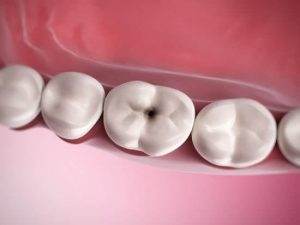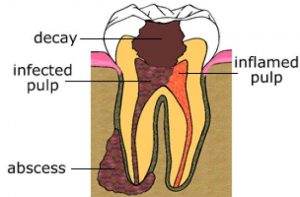DR. DIKSHA TAHILRAMANI BATRA
TOOTH FILLINGS AND EVERYTHING YOU NEED TO KNOW ABOUT THEM
Does it seem that every time you visit the dentist it somehow feels like you end up with another cavity even though you have been brushing, flossing and doing everything you could possibly do! Here are 6 quick tips on understanding how cavities occur and what you need to do to prevent them.
1. WHY DO YOU NEED A FILLING ?
If food particles and plaque remain in contact with teeth for extended periods of time due to improper brushing or the nature of food like sticky or sweet,then a collection of bacteria accumulate causing toxins and acid release which dissolve the enamel.This enamel or the top layer of the tooth begins to discolor gradually depending on how much it has dissolved or weakened from light yellow – dark yellow – light brown -dark brown-grey and finally jet black.If not treated at this stage that portion of the tooth will chip away and become what we call a ‘ cavity .
What decay looks like ? When decay occurs to varying degrees this is what it will look like:
- Discoloured areas especially on the grooves and valleys of your back teeth.
- Dark spots or greyish black areas on your front teeth.
- Chipped off areas that your tongue often goes into.
- Holes which lodge food on your teeth.
…it’s probably the right time to get or replace an existing filling.

What decay feels like ? It starts with Mild sensitivity on cold water Transient Sensitivity on eating sweet Prolonged sensation on hot or cold things Slight pain on biting or chewing electric sensation or sudden sensitivity on certain foods Constant pain that lasts for hours and will need medication.
2. HOW DOES THE DENTIST CHOOSE A FILLING ?
Filling materials earlier ranged from silver amalgam fillings to cements like glass ionomer.But now the most widely used option is composite material, a kind of plastic that is soft before and hardens while chemically bonding to your teeth when cured with a UV light.

3. HOW MUCH WILL IT COST ?
Costs of fillings can vary widely on:
- The material being used by the dentist
- Skill and experience of the dentist
- The size of the filling
- Amount of remaining tooth structure
On average they start from as low as 1000 INR can go up to 4-5 times more.
4. WHAT TO EXPECT AFTER A FILLING ?
A filling procedure if permanent and when done with tooth coloured composite allows you to eat immediately with no precautions. Your tooth is as good as new and you pretty much can’t make out where the filing was done.You may feel symptoms ranging from mild to moderate sensitivity which should all settle within 48 hours.Bite adjustment may be needed if the filling is slightly over or under the level of your bite.You must not continue to experience any food lodgement or prolonged sensitivity after this procedure.
5. PREVENTION MAINTENANCE AND AFTER CARE
Decay or cavities can be prevented by a variety of preventive procedures like applying sealants in the fissures of teeth to prevent food lodgement and fluoride application to attract more calcium and protect the tooth from bacterial acid breakdown.Fillings once done can be maintained by proper home care measures including brushing, mouthwash and flossing.

